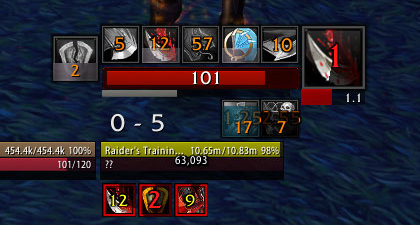
It is only possible to specify a spell that is currently in your spellbook.
Spell: The name of the spell to be checked. to cast it) or is on cooldown, then this trigger will not be active.Īction Usable triggers provide Duration Info, Icon Info, and Name Info, but do not show stacks. This directly correlates with the way it is displayed on the action bar if the spell would be grayed out (its proc conditions are not met, or there is not enough mana/rage/etc. The Action Usable trigger checks whether a specified spell is able to be used. Some of the more important types of Status triggers are described below: Action Usable Status triggers are generally based on information about the player or the environment that can always be checked. This functions best when the aura is in a dynamic group. Show all matches (Auto-clone): Enabling this option will clone the display for each affected unit. It also removes the trigger's ability to provide any dynamic information. Inverse: Enabling this option will completely flip the behavior of the trigger it will make the display appear whenever the trigger's conditions are not met, and invisible when those conditions are met. Own Only: Enabling this option will cause the trigger to only consider auras that were cast by the player. Remaining Time: A comparison test for the remaining time of the aura. Most auras do not stack, and those auras will have a stack count of 0 by default. Stack Count: A comparison test for the stack count of the aura. Unfortunately, WoW makes you specify, and will not search for buffs and debuffs at the same time. Aura Type: Whether the aura is a buff or a debuff. Prevents the trigger from being active when you are not in a party or raid. Hide When Not In Group: Only available if "Smart Group" is chosen for the Unit option. For example, if Operator is set to "<" and Count is set to 5, then the trigger will only be active if less than 5 people in your party of raid are affected by any of the specified aura names. Such Aura triggers will screen all of the people in your party or raid, count how many people are affected by any of the specified aura names, and then that number will be tested by the comparison you specify in these two fields. Group Member Count: Only available if "Smart Group" is chosen for the Unit option. This can be more efficient that "Multi-target" but applies only to nameplates on your screen. Nameplate looks at each nameplate unit ( nameplate1 - nameplate40). This can rely on combat log events to track information about creatures that do not have unitIDs and can be inaccurate. Multi-target looks at all known units (includes all of the above). Boss looks at each enemy with a boss frame during an encounter ( boss1 - bossN). Arena looks at each of your arena enemies ( arena1 - arena5). Smart Group is a combination of Party and Raid, handling both group types, or player only when not grouped. Raid looks at each of your raid members ( raid1 - raid40). Party looks at each of your party members ( party1 - party5). Multiple units: Party, Raid, Smart Group, Arena, Boss, Multi-Target, and Nameplate. Single unit: Player, Target, Focus, and Pet.  Unit: The unit(s) which should be watched for the specified aura.
Unit: The unit(s) which should be watched for the specified aura. 
It is possible to specify up to 9 different aura names the trigger will activate when any of the specified names are detected.
Aura Name: The name of the buff or debuff. Additionally, if "Smart Group" is chosen for the Unit option, the trigger will provide Duration Info and Stack Info but not an icon or name. 
However, if the Inverse option is checked, an Aura trigger will not provide any of this information. Auras are also known as Buffs or Debuffs.Īuras provide Duration Info, Icon Info, Name Info, and Stack Info. The types of information provided by each trigger type will be specified in this page, along with explanations of each trigger's options and behavior.Īuras are the most commonly used triggers in WeakAuras. Similarly, some triggers do not provide all 4 types of information, some do not provide any, and some provide different types of information depending on circumstances. The Progress Bar type is the only Display type which shows all 4 of these types of information the other display types show some or none of them. Triggers pass information to the displays to which they are connected through mainly 4 channels: Duration Info, Icon Info, Name Info, and Stack Info. Trigger types are considered separate entities from Display types, so any trigger can be used for any (non-group) Display type.

The first three will be explained here for the fourth, see Custom Triggers. There are 4 categories of triggers: Auras, Statuses, Events, and Custom triggers.








 0 kommentar(er)
0 kommentar(er)
